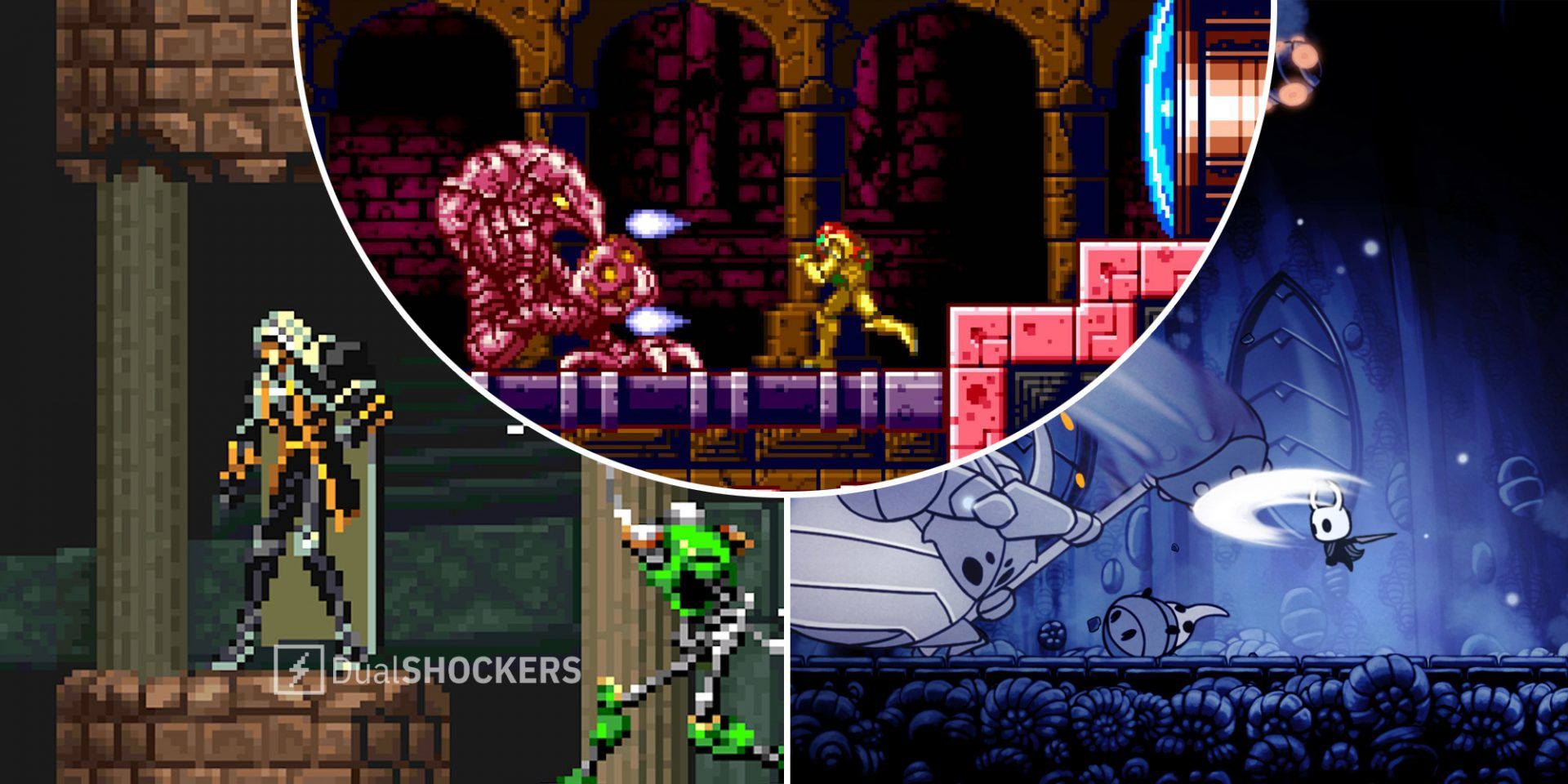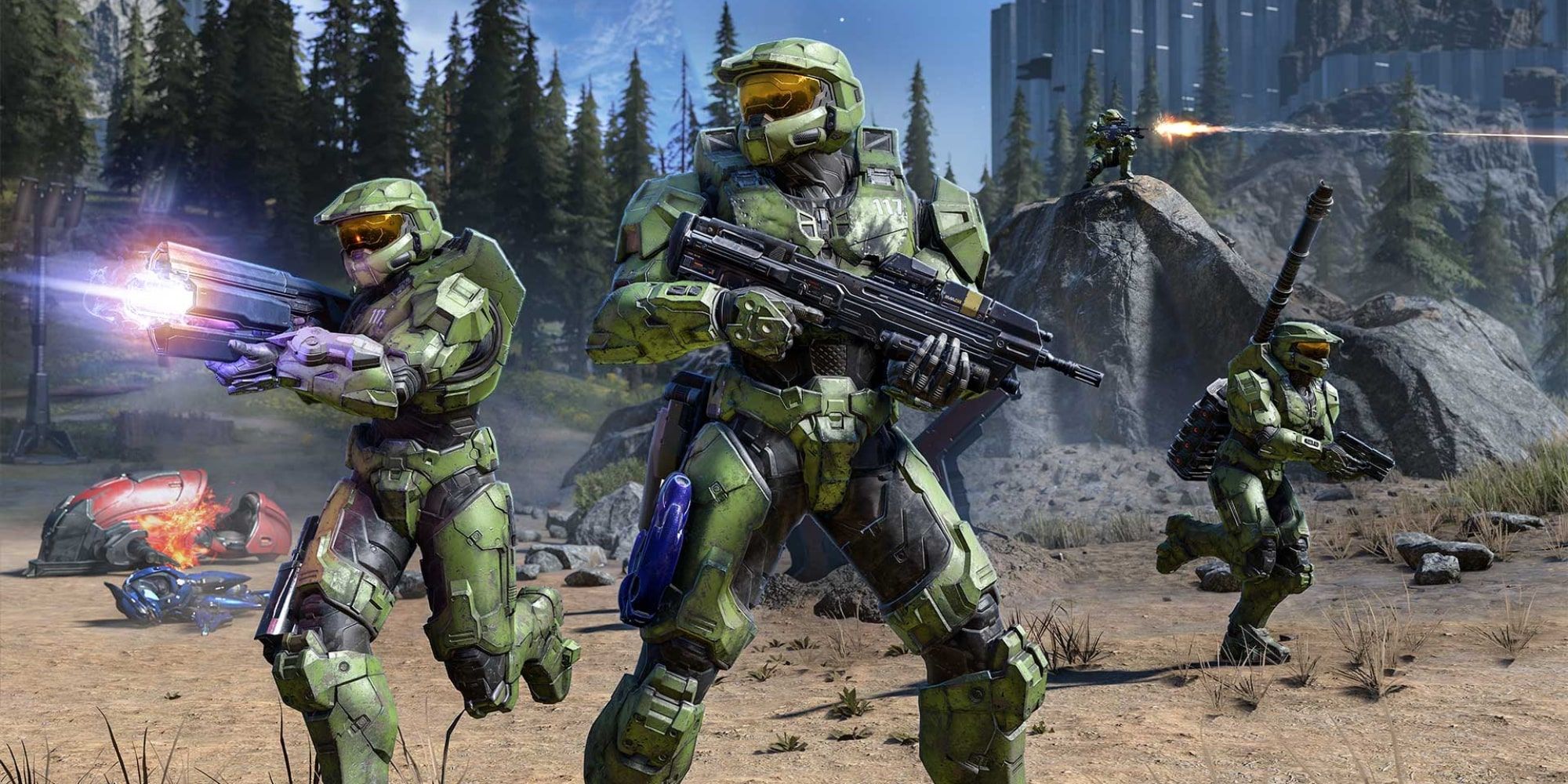Every genre deserves to flourish freely – I think that’s something we can all get behind. Sure, not all of them are our respective cup of tea, but it’s only through sheer variety that we ever truly see the extent of what’s possible. I loathe card games, but Marvel’s Midnight Suns still managed to hook me! Matthew wasn’t big on horror for years, but he absolutely loved the Dead Space Remake. It’s why I don’t typically try to discourage the proliferation of any given genre.
But man, I think we’ve jumped the shark on Metroidvanias. We have horror Metroidvanias, FPS Metroidvanias, rogue-lite Metroidvanias, romantic Metroidvanias, kid-friendly Metroidvanias, cooking Metroidvanias, everything from indie to AAA-tier Metroidvanias – even multiple actual Metroid Metroidvanias. I have typed the genre name so many times in the last few years that I can write it out faster than actual passwords [ed: Feeling the same way about Metroidvania’s cousin, Soulslikes].
It’s not that these games are bad (it’s a vast genre, after all), but I am instantly so much more tired the second someone describes their game and how much they loved Symphony of the Night. Yes, it was a great game. Not every game needs to be it, though.
I was legitimately worried at first that The Gunk would be a Metroidvania, when I booted it up out of curiosity. It had all the potential to be one, even featuring a central mechanic all about clearing areas thoroughly. Except, get this – it… just progresses linearly. Wild concept, right? No open world or need to run back and forth all the time. Sure, you can revisit areas for collectibles but backtracking isn’t mandated. Everything that’s great about The Gunk’s gameplay doesn’t require going through the same motions as you revisit the same areas, rinse and repeat.
There are brilliant mechanics dying on the vine in Metroidvanias. For instance, 9 Years of Shadows is dropping later this month, letting you turn into a mermaid to fight while swimming, and to teleport through the roots of plants to reach otherwise inaccessible areas. Those sound like incredible things to do! Except, by being a Metroidvania, parts of the world will quite likely be locked off if you lack one of those powers at that point in the story, as you tread through familiar territory. The levels will have to be made to account for those powers too, meaning they can’t be tailor-made just to highlight the best aspects of what abilities are being emphasized.
Even if you go to the height of AAA, the genre’s constraints become more obvious. Jedi: Fallen Order’s world exploration is something even its biggest fans have had complaints over. For however refined its combat may be, getting between those fights is unnecessarily sloppy, including some really gratuitous gate-keeping requiring specific moves even though you know that logically the starring Jedi shouldn’t need them if he’d just grab a ledge like he usually does.
The Metroidvania craze genuinely makes me want for the days of more traditional indie platformers. While they grew to the point of cliché as well, their structure emphasized a more deliberately bespoke curve to the world. It’s an art of game design so rarely seen in even the AAA space that harnessing it right in the indie sector would be a breath of fresh air.
Just look at Halo Infinite, and by contrast, Halo 2. Halo Infinite is essentially one giant samey level with a sprinkling of somewhat distinct, individual enemy encounters. Its sandbox design actually goes so far as to resemble Metroidvanias, given how you have to unlock additional reinforcements to really gain full mastery of the map. It also happens to drag on, a lot, because the factor that shakes the game up is your behavior, not the world itself.
Halo 2’s levels are all specifically themed around certain mechanics, enemy combinations, pacing, and flow. Infinite has a handful of sections resembling this, while Halo is nothing but these sorts of handcrafted stages. Your defense of Cairo Station is nothing like landing on Delta Halo. There’s even a second playable hero with his own unique mechanics that further differentiate his levels. Except you don’t have to go that far.
Rayman Legends has a control scheme so simple you can play it one-handed on a keyboard. Yet despite having one of the simplest gameplay formulas on the market, it manages to have not one, not two, not three, but five campaigns with their own unique level features that are never repeated. Rayman Legends has rhythm mechanics, stealth, precision platforming, bullet-hell shooting, and varied boss fights.
Is Rayman Legends’ presentation potentially out of an indie team’s reach? Depends on their talents, but let’s go with the argument of “Yes.” The philosophy behind its gameplay though? Totally doable.
You know how I know? Because years back, one game that could’ve easily been a Metroidvania dared to be something else, and my word is it better for it. You might not know the name Foregone, but it was one of the earliest Epic Game Store Early Access exclusives. It’s 2.5D, heavily emphasizes platforming and combat, and is entirely linear. Though it has rogue-lite elements to its progression, the levels aren’t autogenerated. In fact, as you progress and unlock new teleport pads back to your hub, you don’t even have to revisit old areas unless you so desire it. Neither is it a sprawling mess of levels like other Souls-inspired games. Instead, it keeps the learning curve mentality and the reward for recovering your lost experience upon death, but emphasizes a lean, mean focus on never halting.
There are so many wonderful facets to Foregone, but I never truly appreciated how refreshing its level progression and pacing were until I looked out upon the sea of Metroidvanias. It satisfies in the best ways without being beholden to the same issues of a template that’s gone practically unquestioned for too long. This is what I go to indie games for – something I couldn’t get anywhere else. I shouldn’t be nodding along with a tired expression when another press conference’s token indie game is more predictable than the AAA fare. Even the boomer shooter scene, itself a bit homogenous at times, has more visible variety these days.
Metroidvanias are a unique blend of systems that should encourage wonder and exploration, not triviality and busywork. We already saw that happen with military shooters in 7th gen and sandbox games in 8th gen – let’s not overdo it with one of gaming’s most distinct genres.




